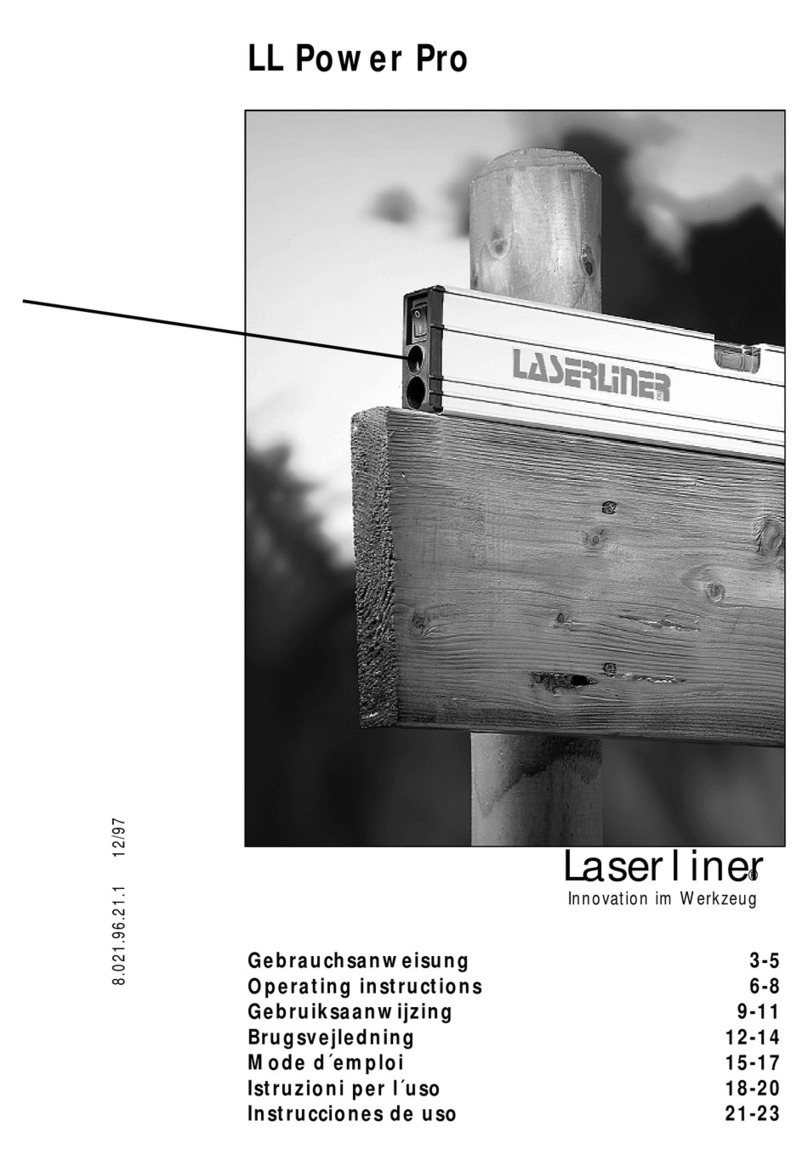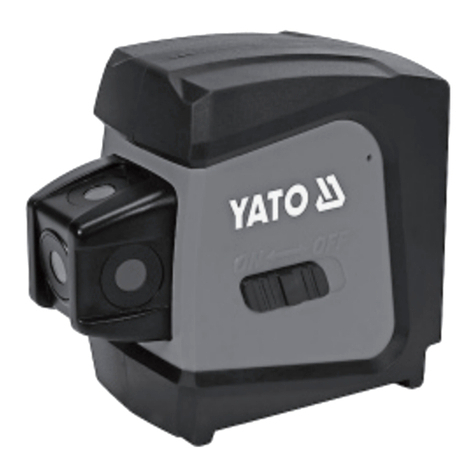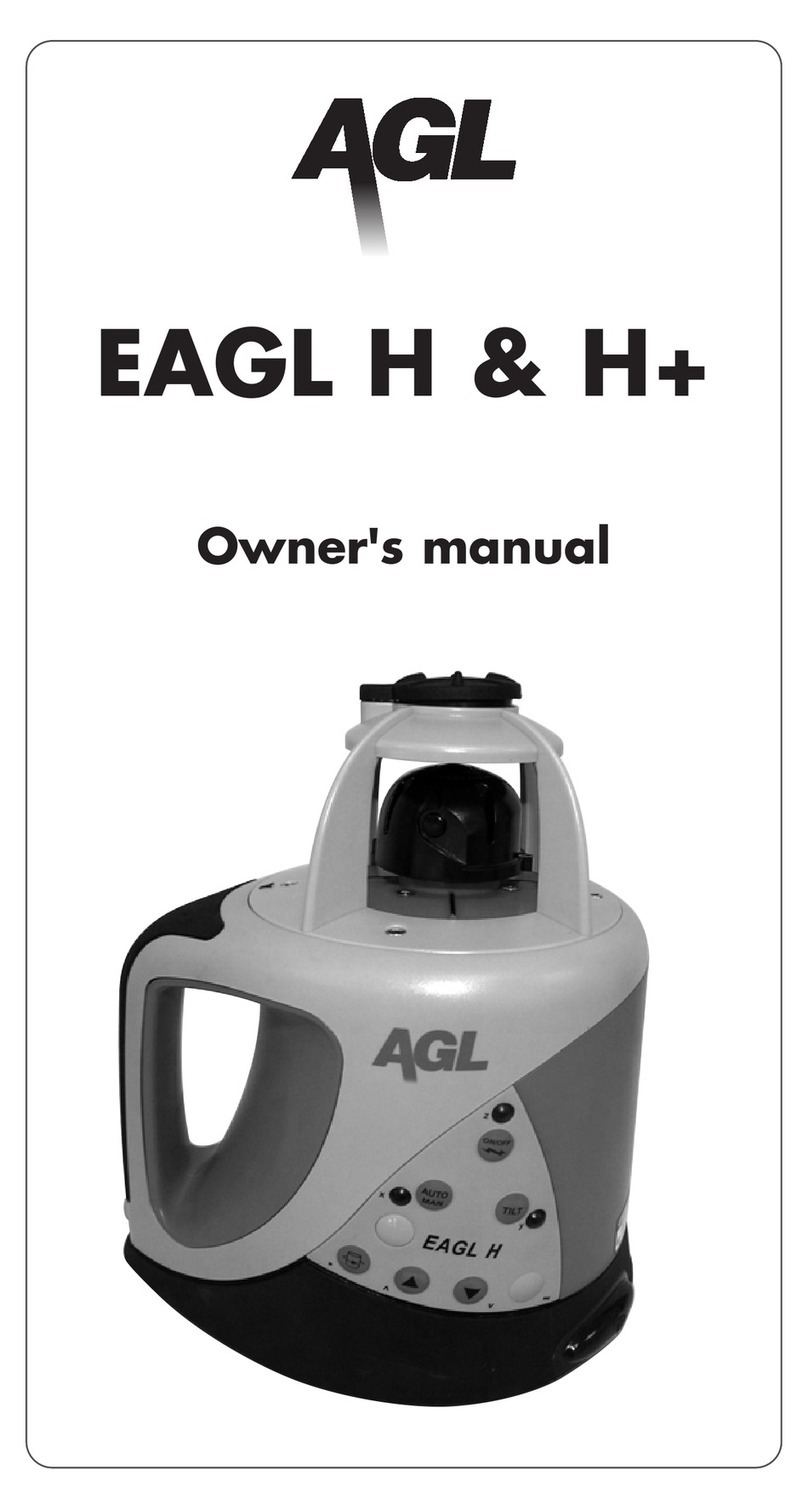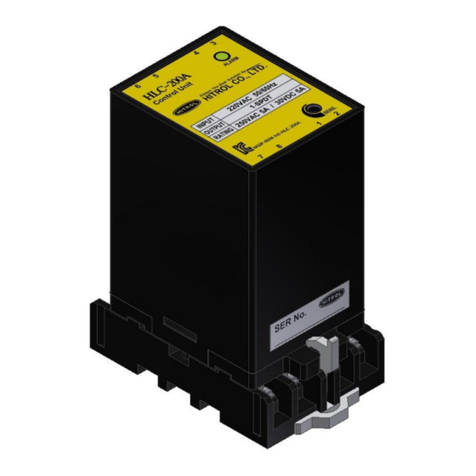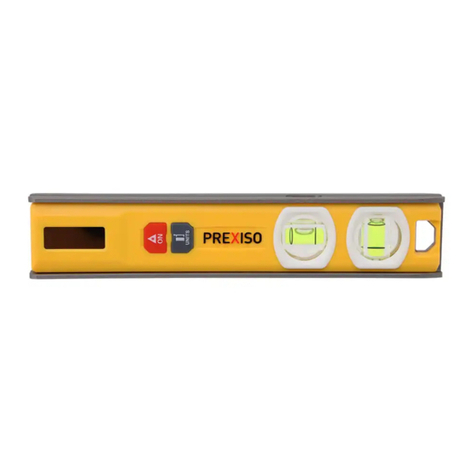EMKOMETER L21/3-DIAL Series User manual

www.emkometer.com
Page L21/3 dial type| Emkometer s.r.o., Na Žižkově 1245, 58401 Ledeč n/S., Czech Republic
1of 10 tel/fax: 569 721 622 | tel: 569 720 539, 569 721 549 | info@emkometer.cz
Measurement and Regulation
EMKOMETER Ltd.
Operating instructions
Liquid level sensor
Ledec nad Sazavou
Series L21/3-DIAL-xx.xx.xx
Contents:
1. MEASUREMENT PRINCIPLE AND APPLICATIONS
2. DESCRIPTION
3. OPERATING CONDITIONS
4. SPECIFICATION
5. OTHER DATA
6. STORAGE, DELIVERY AND TRANSPORT
7. INSTALLATION / ADJUSTMENT OF MECHANICAL PARTS, COMMISSIONING
8. SETTING THE ELECTRICAL PARTS, MAINTENANCE
9. TABLE OF FLOAT SENSORS
10. QUALITY WARRANTY
11. OTHER INFORMATION REQUIRED FOR PRODUCTION AND SETTING-UP
1. Principle and Applications
1.1 Principle
The float sensor consists of a head, neck, wire and a float. Optionally float is coupled to the wire via
magnetic follower over guide tube. The liquid level is measured by the float that moves freely along the
tube, actuating the follower via a magnetic coupling. The magnetic coupling consists of magnets placed
in the float and in the follower. In the case of turbulent levels, extreme temperatures etc., a follower with
a more powerful magnetic coupling is used. The follower located in the guide tube is connected to the
instrument head by stainless-steel wire. The follower moves through the magnetic field, transmitting the
liquid level movement to the instrument head. In simple applications with noncorosive liquids directly
connected float is used. The transmission mechanism indicates instantaneous liquid levels on a circular
scale, or it controls liquid levels at the desired height by means of the LG´s electronic equipment. Using
a resistance transmitter or a transmitter with a potentiometer, it provides an impedance signal or a
current output signal.
1.2 Use
Float sensors (hereinafter FS) are designed to measure and control liquid levels in closed and open
tanks or in pressure tanks. Some types of instruments, designed and marked for explosion-free
atmospheres, can also be used to measure various media in Zone 0. IP 65 allows for safe
measurements in the amospheres with aggressive substances. The level gauge is a mechanical-
electrical device whose modular construction allows you to create various instruments with different
features.
Types of level gauges and their combinations
LG head (basic information)

www.emkometer.com
Page L21/3 dial type| Emkometer s.r.o., Na Žižkově 1245, 58401 Ledeč n/S., Czech Republic
2of 10 tel/fax: 569 721 622 | tel: 569 720 539, 569 721 549 | info@emkometer.cz
Measurement and Regulation
1.21 Basic options and applications
1.21.1 The instrument is designed for local indications, with no external power supply or electric
equipment.
1.21.2 The LG head with electric equipment can control and indicate the liquid level. Some types of
level gauges may be fitted with resistance or other transmitters, featuring current or voltage
outputs.
1.21.3 A special model for local indications may be fitted with some other components to monitor
temperature, technological conditions and liquid level limits. This type of instrument is supplied
on request.
2. Description
Various combinations of this float sensor include the following basic components:
2.1 Instrument head
The LG head is a box, indicating liquid level on a scale with a range of 5 m, 10 m or 20 m using two
dial pointers. The liquid level is measured by a follower located in the magnetic field of the float. The
standard follower for a Ø 38 mm guiding rod is marked LIC030/050. The follower with a more powerful
magnetic coupling is marked LIC030/095/M8. The follower for a Ø 20 mm guiding rod is marked LIC015
/050. The head is an aluminium casting with outlets. Two basic head models marked LIH250/175 and
LIH170/160 are manufactured most often. On request, the instrument may also be placed in the
LIH310/225 head. The first three digits indicate the head diameter in mm. The next three digits indicate
the head depth.
2.2 Guide tube
The guide tube is made of stainless steel or polypropylene. The guide tube (commonly called "guide
rod") is closed at the bottom, separating the inside of the instrument from media. The tube is suitable for
pressure containers up to about 3.5 MPa. The maximum length of the stainless steel model is 20,000
mm (5,000 mm for the polypropylene model). A Ø 20 mm stainless steel tube (outer diameter) is
usually used for the 5,000 mm model. A Ø 38 mm tube is used for turbulent levels and the 5,000
mm model. Depending on the method of filling the tanks or at turbulent fluid levels, we recommend
fixing stainless steel tubes from the height of 3,000 mm.
The guide rod may also be fitted with a collar only (in insufficient space). This is not possible in pressure
vessels.
2.3 Neck
The LIH250/175 (LIH310 / 225) head neck is a connection component fitted with a collar and a turning
flange. The flange makes it possible to fasten the guide tube to the tank neck and to turn the instrument
so that you can mount it or read the scale. DN50 PN16 flanges acc. to DIN 13 11 60 are commonly
used. The DN50 PN40 neck with a tongue/groove may be used for pressure vessels. The LIH170/160
head neck includes a cap nut screwed on the threaded guide tube (Pr.20), which may also be flanged.
As for the collet model, the neck is not separate but the collet fitting can be mounted on the guide tube
at the desired height.
2.31 The common neck size is 120 mm.
2.32 In some cases, we can offer a neck up to 3,000 mm (possible flooding, low-lying tank, mounting
the head higher in the area with a lower degree of explosion protection, high temperature in the tank,
etc.).

www.emkometer.com
Page L21/3 dial type| Emkometer s.r.o., Na Žižkově 1245, 58401 Ledeč n/S., Czech Republic
3of 10 tel/fax: 569 721 622 | tel: 569 720 539, 569 721 549 | info@emkometer.cz
Measurement and Regulation
2.4 Float
Different types offloats have been designedfor different fluiddensities. The floats for Ø 20 mm stainless
steel tubes up to 5,000 mm are marked LIF134/180 and LIF082/216. The floats for Ø 38 mm stainless
steel tubes up to 20,000 mm are marked LIF310/220, LIF235/250, LIF310/220/M8 and LIF235/250/M8.
The first three digits indicate the float diameter whereas the next digits indicate the float height incl. the
float tube. The LIF235/250/4 is a special quadruplet float to measure liquid gases up to 3.5 Mpa. The
L21/3-DIAL235/220/T3 float may be used in pressure vessels (up to 3.5 MPa). It is also possible to
measure the interface of liquids or high-viscosity liquid levels using a different float measurement
principle. A polypropylene float has been designed for aggressive fluids.
3. Operating Conditions
3.1 Operating Conditions
3.11 The instrument design ensures safe operation in the
following areas:
a) cold
b) hot
c) for specified types of instruments in Zone 0, Zone 1 and Zone 2
d) dusty
e) wet 3.12 Ingress protection IP65
3.13 Ambient atmospheric pressure 86 to 106 kPa
3.14 Measured medium density 0.3 to 4 kg.dm-3
3.15 Working pressure at the measuring point (SST model) max. 2.2 MPa
If the float has not been designed for this pressure, it isnecessary to place it outside the tank during the
tests.
3.16 Temperature at the measuring point - 50 C° to + 120 C°
special model -150C° to + 350C°
3.17 The working position is perpendicular to the head in the upper position
3.18 For special models, the working position is perpendicular to the head in the
lower position.
4. Specification
4.1 Measurement
range:
SST model max. 20,000 mm
Polypropylene model max. 5,000 mm
4.2 Scale range for local measurement 0-5 m, 0-10 m, 0-20 m
The scale range is also the basic range to determine the sensor error.
4.3 Special scales with various units (on request): liters, m3... etc.

www.emkometer.com
Page L21/3 dial type| Emkometer s.r.o., Na Žižkově 1245, 58401 Ledeč n/S., Czech Republic
4of 10 tel/fax: 569 721 622 | tel: 569 720 539, 569 721 549 | info@emkometer.cz
Measurement and Regulation
4.4 Measurement accuracy (local indication) + 0.2% within the range of 0 to 5 m
+ 0.1% within the range of 0 to 10 m
+ 0.05% within the range of 0 to 20 m
4.5 Insensitivity when the float moves upwards or downwards (change of level in one direction)
max. + 8 mm
4.6 Insensitivity after the float movement direction has been changed 4.61
Filling the tank max. 15 mm +
4.62D Draining the tank max. + 10 mm
Note Whenever the output signal is evaluated, theserepeated inaccuracies may be compensated for
in the control system.
5. Other data
5.1 Operating mode: permanent
5.2 Product data: technical and metrological data according to 5.31, 5.32
5.3 Instrument identification
5.31 Tag plate (located under the glass on the instrument scale):
(A) Manufacturer´s address
B) Instrument type LBA-XX.XX.XX
(C)Year of production e.g. 2002
D) Serial No. ............ ..
E) Country of origin: Czech Republic
F) 5.32 Product plate (located on the rear cover or on the instrument side)
This plate includes the following additional information such as a wiring diagram, information on built-in
components etc.:
Product Reference No. (see technical documentation): NKO1002 / LBA (operating instructions)
This marking is specified by the manufacturer depending on built-in components and the most
unfavourable temperature conditions.
5.32 If the protective glass breaks, IP 65 is affected. IP 20 still remains with regard to internal electrical
equipment. This defect must be fixed immediately !! In any case, it is necessary to clean and check the
instrument and use a new front cover.
6. Storage, delivery and transport
6.1 Storage
The instrumentmay bestored at anambient temperature of -20 oCto+40oCand at an ambient humidity
up to 75%.
6.2 Delivery
The instrument is delivered with the NKO1002 / L21/3-DIAL operating manual, supplements and other
documents as agreed by the manufacturer and the customer.
6.3 Transportation and storage

www.emkometer.com
Page L21/3 dial type| Emkometer s.r.o., Na Žižkově 1245, 58401 Ledeč n/S., Czech Republic
5of 10 tel/fax: 569 721 622 | tel: 569 720 539, 569 721 549 | info@emkometer.cz
Measurement and Regulation
The instrument is delivered in a box, protecting it from mechanical and thermal damage.
Following the assembly and the final inspection, the float is dismounted from the guide rod/pin
rod. The glands are tightened and sealed. Then, the magnetic follower is wrapped in a paper strip,
inserted into the measuring head neck and tied to the head neck, the pin and thegasket with string. The
lower part of the flange head is taped. The head is connected to the ground covers. The LBH250/175 or
LBH310 /225 headsinclude an internal cover grounding and bolted head covers. The LBH170/160 head
includes bolted covers only.
6.4 Recycling
All instrument materials may be disposed of in accordance with applicable laws and standards.
Electrical equipment should not be disposed of with mixed municipal waste but it shoud be stored in
special places.
7. Installation/adjustment of mechanical parts, commissioning
7.1 Installation of the guide rod and the float
7.11 General principles
Before installing the instrument, recheck the place for the guide rod and the float. Place the guide rod
where the flowing liquid cannot affect measurement accuracy. In the case of turbulent medium levels,
we recommend covering this place with a metal sheet or creating a communicating vessel using a slip-
on tube over the guide rod. The diameter of this tube has to be large enough not to hinder the free
passage of the float.
7.12 Guide rod
Clean the guide rod before it is mounted. If the mounting head is not mounted immediately, cover the
guide rod flange. The place above the DN50 PN16 flange or the screwed connection must allow for
inserting the guide rod into the flange hole. The guide rod dimensions correspond to the drawings and
technical data for local indications.
7.13 Float
After mounting the guide rod´s rotating flange to the connecting flange, slip a float on the guide rod
(control welded-on piece is to face the head) and insert the lock pin into the tube hole. Lock the pin
against falling out by snapping it in the groove. Make sure that the float passes freely along the entire
guide rod. The float has to pass freely during all measurements and even turbulent levels or deflected
rods must not hinder its free passage.
Dismount the float and the guide rod likewise. Before dismounting them, make sure that there is no
pressure, dangerous fumes etc. in the tank.
7.2 Mounting/dismounting of the instrument head
7.21 Installation/adjustment of mechanical parts
The LBH head is packed in a plastic container. Attached to this head there is a seal and a pin to lock
the guide rod. Before mounting the head, dismount the back or front cover. Dismount the seal ring and
the follower lock. Pull up the follower and check the inner mechanical parts. Clean the guide tube inside
throuthout and put a seal on the flange.
7.22 Mounting the follower in the tube
Put the head next to the flange and pull the follower carefully up. With one hand, release the wire to
pass freely from the FS head. Do not jerk the follower and do not release the wire too much as the wire
must no be looped.
Insert the follower slowly into the guide rod hole. Using the mounting spring, move the magnetic
follower through the flange into the non-magnetic guide rod. After that, drop the follower by pulling the
wire out of the LBH head while checking its free passage throughout the tube. Once the follower stops

www.emkometer.com
Page L21/3 dial type| Emkometer s.r.o., Na Žižkově 1245, 58401 Ledeč n/S., Czech Republic
6of 10 tel/fax: 569 721 622 | tel: 569 720 539, 569 721 549 | info@emkometer.cz
Measurement and Regulation
at the top of the magnetic coupling, pull about 1 meter of the wire out of the head with one hand. Pull
up the follower about 300mm above themagnetic coupling with the other hand. Move yourhand holding
the follower quickly down so that the follower passes through the top magnetic field to the coupling
center. Following this manipulation, there are be two possibilities. By releasing and pulling the cable,
you can find out if the follower is fixed in the magnetic coupling. If the follower does not hang on the
cable but it is fixed, the follower is placed in the correct working position. If the follower hangs on the
wire after falling under the magnetic coupling, pull the follower up to the magnetic coupling center. Check
the follower position by pulling upward at a force of about 0.15 kg (Ø 20 mm rod) or 0.45 kg (Ø 38 rod).
If you cannot pull the follower, its installation has been made properly.
7.23 Dismounting the follower
When dismountingthe FS head, pull the wire by force to release the follower from the magnetic coupling.
The magnetic coupling holds the follower and the float by a magnetic coupling force (about 0.15 kg for
a Ø 20 mm rod and 0.45 kg of a Ø 38 mm). In the case of a double magnetic coupling, this force is 1.6
times greater. After this inspection, move the follower throughout the guide rod, watching the instrument
in operation. If the instrument or pointers jerk, dismantle and recheck the inside of the guide rod and
the head. If there is no common defect such as impurities in the tube (head) or looped or stranded wires,
contact the manufacturer.
7.24 Mounting the sensing head
Mount the head to theguide rod. Ensure easy access to the scale and to the electrical equipment. Set
the instrument pointers. To set a zero position when the float is at the stop pin, loosen the screw and
set the pointers as necessary. We recommend measuring the actual level. Increase the liquid level in
the tank by about 500 mm and measure the actual liquid level using a measuring rod. Loosen the
pointer screws and set the measured value decreased by about 4 mm on the scale using small and
large pointers. By shiftingthe pointers, you can set themean value, decreasing the actual measurement
error. Tighten the pointer screws and fasten the front cover.
7.25 Error correction
The magnetic coupling counteracts the float in the liquid (friction between the rod and the follower and
friction between the float and the rod), causing level measurement differences whenever the liquid level
rises or drops. Depending on the the type of loat and medium, this difference may be up to +15 mm in
the extreme positions when the movement direction is changed. After about 30 minutes (at the turbulent
level sooner) or when the float starts moving in a certain direction, this error returns to the normal
insensitivity limit (about + 8 mm). This limit is affected by the kind of measured liquid, ambient
atmosphere etc.
Since this inaccuracy repeats regularly, the error may be assessed by comparing the data measured
e. g. using a measuring rod and a specific float sensor. The measured insensivity of the instrument is
directly proportional to the output signal of the level gauge. The error may be compensated using
software or a compensation table.
8. Setting the electrical parts, service and repairs
In general:
Mount and adjust the electrical equipment depending on the type of instrument and rear board
electronics. Use one or more terminal plates. Connect the grounding cable through the crimp eyelet to
the rearplate (see the marking). Make connections according tothe wiringtable fixedtotheinstrument´s
rear cover.
8.1 Setting the L21/3-DIAL-xx.xx.xx sensor (switches only)
When setting the microswitch contacts, proceed as follows:
- Dismount the head from the connecting flange and put it on its side next to the tube neck

www.emkometer.com
Page L21/3 dial type| Emkometer s.r.o., Na Žižkově 1245, 58401 Ledeč n/S., Czech Republic
7of 10 tel/fax: 569 721 622 | tel: 569 720 539, 569 721 549 | info@emkometer.cz
Measurement and Regulation
- Pull the follower out of the magnetic coupling and insert the wire slowly into the instrument head.
- h1 (h2) - common minimum level, h4 (h3) - common maximum level
8.11 Adjusting the H1, H2, H3, H4 levels
- according to the pointer indicator, move down to the desired h2 level
- loosen two screws of the cam bracket and move the leading edge of the cam so that the S2
microswitch contact is closed.
- watch the moving cams while emptying the tank. Select the edge of the cam actuating the sensor and
directing its leading edge to the microswitch roller in the down movement.
- after adjusting the cam, tighten the screws and check the setting by directing the leading edge to the
roller again.
- adjust the h1 level in the same way
8.12 Setting the two-level switching (using a single cam switch, which consists of two panels).
For each level, there is one cam (molded panel). For example, adjust the maximum level.
Loosen the S4 microswitch cam and turn the leading edges of both the cams against each
other. One of the leading edge will be used to switch the upper level. Tighten the cams
lightly and adjust the minimum level. Loosen the screw, hold the adjusted cam and use
the leading edge of the other cam to switch the lower level. Retighten both the cams. One
switch can provide us with information on emergency conditions at the upper and lower
levels etc.
8.13 Other cam applications
It is also possible to use the upper edges of the cams to measure liquid levels.
8.14 Adjustment check
After adjusting the instrument, pass the wire throughout the measurement range. Make sure that the
contacts are closed at the level indicated by the pointers. Check the cams for switching. The other
leading edge of the cam (e.g. S4) should not close the contact on the other side of the leading edge
when reaching the h1 level. The other leading edge of the cam (e.g. S1) should not close the contact
on the other side of the leading edge when reaching the h4 level.
Hysteresis adjustment - max. 2% of the range.
8.2 Setting the L21/3-DIAL-xx.xx.xx sensor (switches and el. output)
8.21 See paragraph 8.1 for switch settings
8.22 When setting the electrical output, proceed as follows:
Connect the instrument to the Aripotu board output. Connect the power supply. You may
mount/dismount the head in the same way as when setting the contacts. Pull out the wire up to the
actual lower level (the float is at the stop pin). Deduct this value on the scale. Stop the float movement
in the extreme position. Set the screwdriver in the coupling groove. By turning the screwdriver, set the
extreme stop position using the mechanical coupling (turn the tansmitter shaft). Setthe electrical signal
slowly so that it matches the lower level adjusted by the pointers. If the tank is full, assemble the
sensor and turn the mechanical coupling to set the electrical signal of 0 (4) to 20 mA, 0 to 10V, 0-100
(1000) ohms. The converter board features the default value (e.g. 0 to 4,225 mm = 4 to 20 mA in the
questionnaire). The el. output may be trimmed by ZERO/SPAN potentiometers.
Trim the sensor resistance output by the mechanical coupling only.
When checking the sensor setting, turn the mechanical coupling to match the actual values indicated
by the pointers. Pass through the measurement range slowly, making shure that the signal level
matches the value indicated by the pointers. Only in the case of a deviation in the upper position, set
the output signal level by the transmitter potentiometer. Repeat this step in both extreme positions
several times until the upper and lower signal levels are equal to the values indicated by the pointers.

www.emkometer.com
Page L21/3 dial type| Emkometer s.r.o., Na Žižkově 1245, 58401 Ledeč n/S., Czech Republic
8of 10 tel/fax: 569 721 622 | tel: 569 720 539, 569 721 549 | info@emkometer.cz
Measurement and Regulation
8.3 Closing the instrument after the adjustment
Drop the follower back into the magnetic coupling and check its position. Check the flange gasket and
mount the instrument back on the flange. Recheck the position of cables and tighten the glands. If non-
standard glands are required, consultthe manufacturer.Place the cover gasket and sealing rubber rings
under the bolts and fasten the FS rear cover.
8.4 Service and Maintenance
8.41 Routine inspection and maintenance after about 1 year of operation
Make sure that the output signal values, pointer indications and actual values measured using e.g. a
measuring rod are the same.
8.42 Basic maintenance after about 3 years of operation
Make sure that the output signal values, pointer indications and actual values measured using e.g. a
measuring rod are the same.
Depending on the recommended time of operation and operating conditions, proceed as follows.
Unscrew the back cover and remove screws on the head neck. Put the instrument next to the tube and
pull up the follower. By using the spring, dry and clean the guide tube. Recheck the mechanical parts
on the instrument´s rear panel visually. If there are no rusty surfaces on the components, tighten the
screws and check the terminal box. If necessary, replace the head gasket or rubber O-rings and tighten
the cable gland. Drop the follower into the magnetic coupling and remount the instrument. If the
components on the rear plate are rusty or the gasket has been damaged, execute a medium repair.
8.43 Medium repair after approx. 6 years of operation
The medium repair is executed bythe manufacturer.The instrument is dismounted and all components
are checked. The gear assembly is lubricated and the magnetic coupling, the spring, the wire and all
the gaskets are replaced. If necessary, the same refers to the follower, the microswitch and the
transmitter.
8.44 Instrument service life and maintenance (depending on the spring life)
Depending on the atmosphere in which the FS works (moisture, acid vapors, gasoline, sudden weather
changes, machine vibrations, spring durability etc.), we recommend keeping the period of
recommended basic maintenance. Under heavy-duty conditions, we recommend executing a medium
repair at least once a year. If the instrument is used frequently, this period depends on the maximum
spring life. For example, if the instrument is used with expansion tanks, replace the instrument spring
before finishing about 15,000 cycles. When measuring in the tanks with frequent level changes, service
the instrument and replace the wire and the spring regularly.
8.45 General repair and trim/range changes etc.
The general repair and trim/range changes (modular system) should be made by the manufacturer.
The float level gauges are assembled by the manufacturer or authorized assembly centers.
See the list of assembly centers provided by the manufacturer.
8.46 L21/3-DIAL-xx.xx.xx repairs are executed exclusively by the manufacturer.
Otherwise, the customer shall lose the warranty on the instrument and the manufacturer shall not be
liable for its safe use.
8.5 Specifications are subject to change without prior notice.
8.6 The instrument is serviced and installed by the manufacturer or authorized companies. Contact the
manufacturer for the list of assembly centers.

www.emkometer.com
Page L21/3 dial type| Emkometer s.r.o., Na Žižkově 1245, 58401 Ledeč n/S., Czech Republic
9of 10 tel/fax: 569 721 622 | tel: 569 720 539, 569 721 549 | info@emkometer.cz
Measurement and Regulation
Mechanical part standard code
L21/3/.../.../.../.../.../... ev. L21/3/9000/EDN25PN16/N/NO/B
0. 1. 2. 3. 4. 5.
0. Range
1. Device connection, DN-PN flanges
E top connection, indicator on the side of the tank
F top connection, indicator on the top of the tank
2. Material used
N stainless steel AISI 316 L
PP polypropylene
other material on request
3. Application extent
NO normal
EX in explosion hazard areas
ZO contaminating, sedimenting and crystallizing liquids
5. Special features
A local indication by slider
B local indication by dial/rail
Dial indicator standard code
L21/3-DIAL- xx. x x x. x
01 –up to 5m
02 –up to 10m
03 –up to 20m
0 –number of level switches
2 –2 level switches
4 –4 level switches
0 –no microswitch
1 –1 microswitch
3 –NO zone
9 –Ex zone 0 –no el. output
1 –4-20 mA, 2 wires
2 –4-20 mA, 4 wires
3 –0-10 V, 4 wires
4 –0-100R
5 –0-1000R
9 –customized
Custom versions available upon request
10. Quality Warranty
10.1 The manufacturer´s warranty is valid for 24 months under the Commercial Code (§ 429 et seq.).
Any defects caused by faulty materials or design during the warranty period shall be repaired free of
charge. Send the instrument in the original or equivalent packaging to the manufacturer.
10.2 Thewarranty does notcover any damagecaused by unauthorized interference with the instrument,
failure to observe the technical and operational conditions specified by the manufacturer, mechanical
damage and incorrect assembly procedures.

www.emkometer.com
Page L21/3 dial type| Emkometer s.r.o., Na Žižkově 1245, 58401 Ledeč n/S., Czech Republic
10 of 10 tel/fax: 569 721 622 | tel: 569 720 539, 569 721 549 | info@emkometer.cz
Measurement and Regulation
10.3 Specifications are subject to change without prior notice. Any changes shall be listed in the
attached document.
Manufacturer's
address:
EMKOMETER, s. r. o.
Na Žižkově 1245
584 01 Ledeč nad Sázavou
Tel./Fax:
+420 569 720 539
E-mail:
info@emkometer.cz
Popular Laser Level manuals by other brands
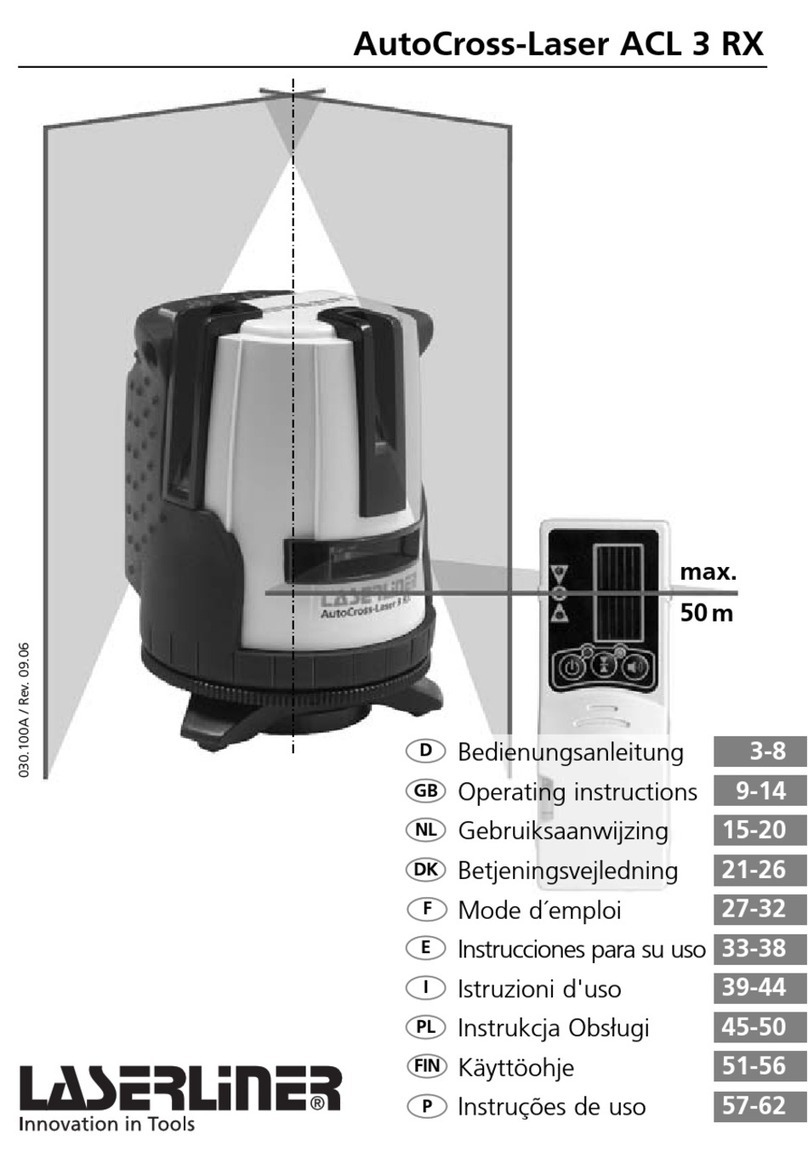
Umarex
Umarex LaserLiner AutoCross-Laser ACL 3 RX operating instructions

Kapro
Kapro 883G user manual
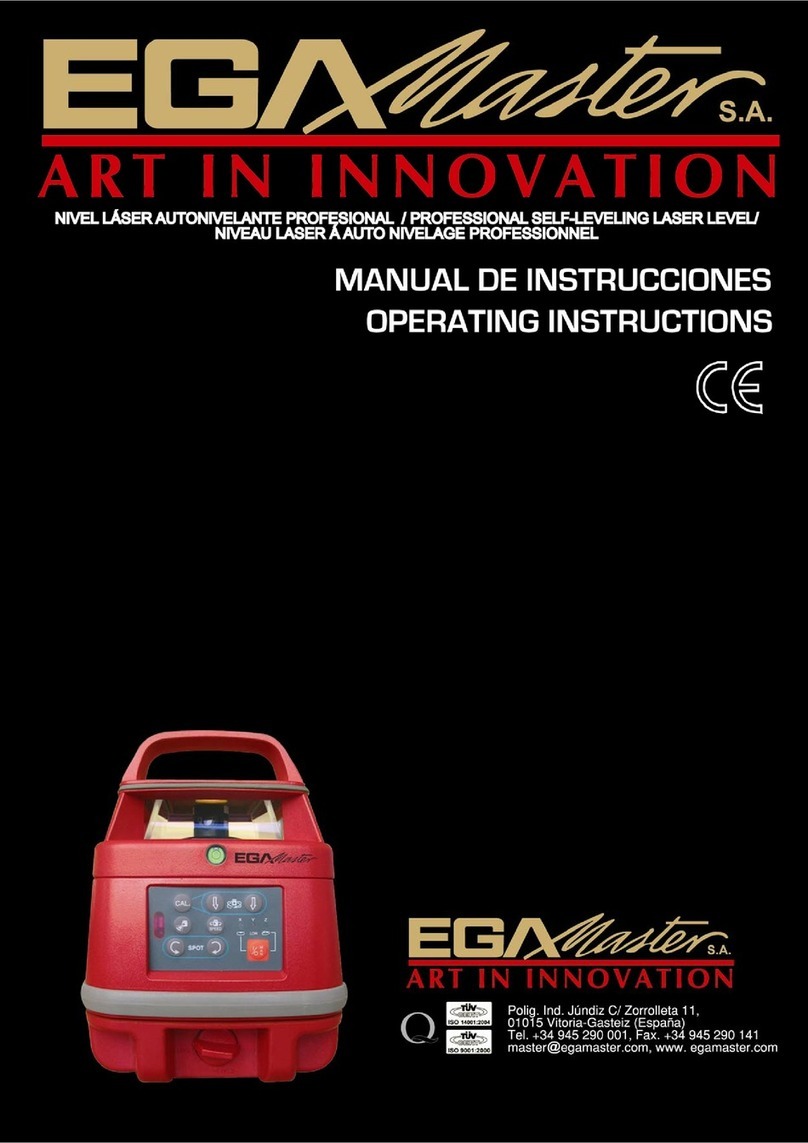
EGAmaster
EGAmaster 65512 operating instructions
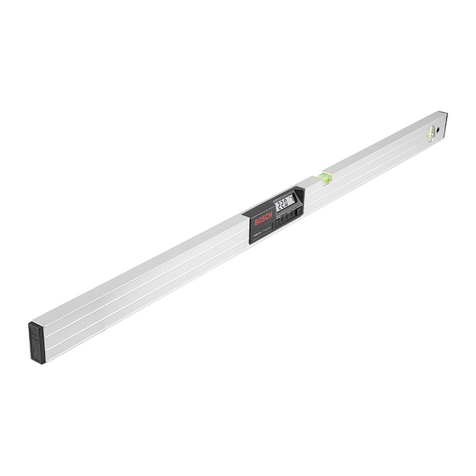
Bosch
Bosch DNM 60 L operating instructions

Bosch
Bosch UniversalLevel 2 Original instructions
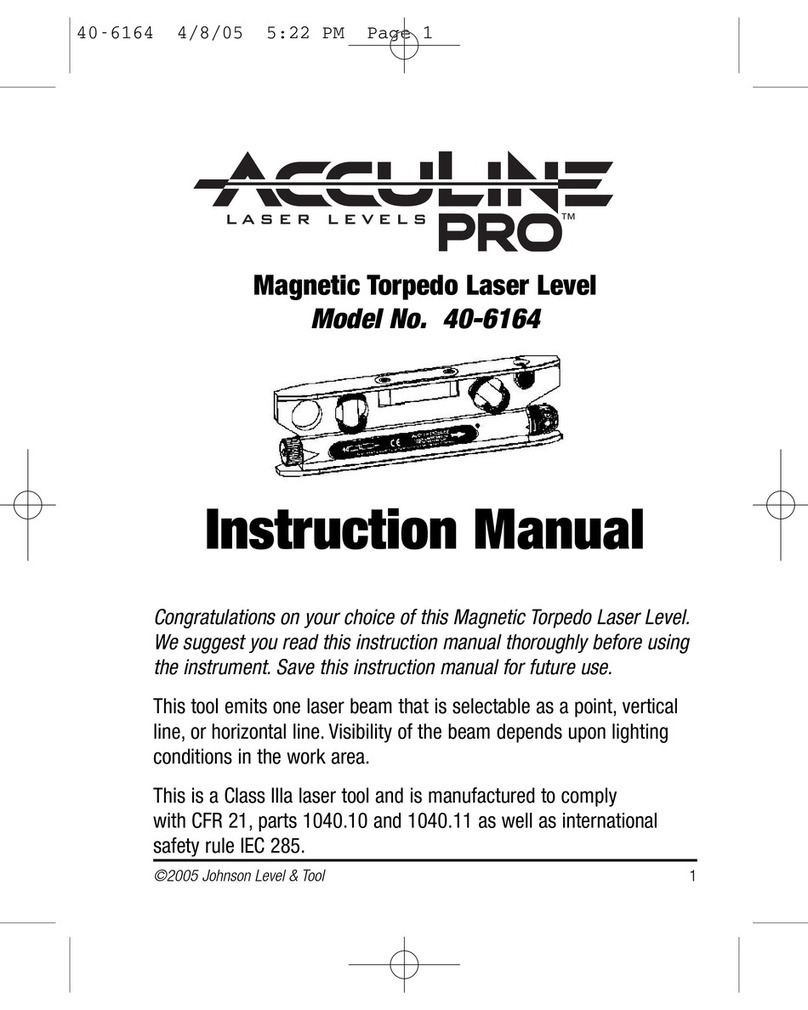
Johnson Level & Tool
Johnson Level & Tool 40-6164 instruction manual
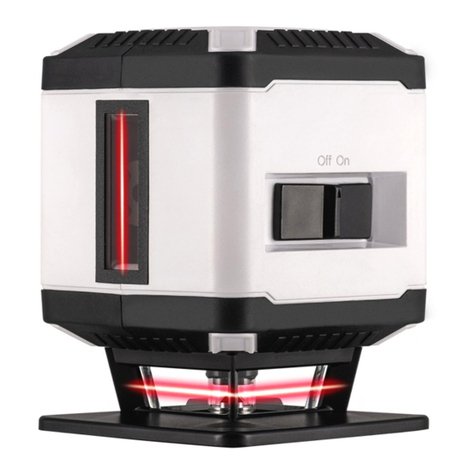
Lasertec
Lasertec FX360R instruction manual

Hilti
Hilti PR 300-HV2 operating instructions
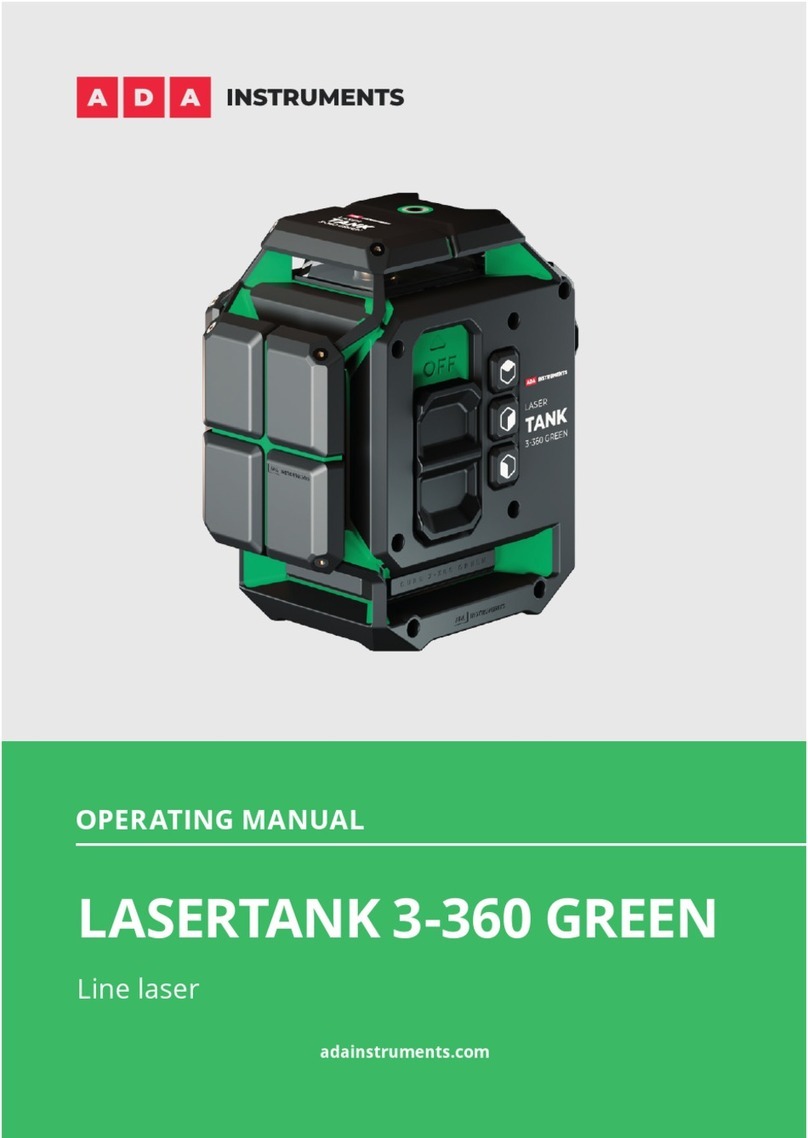
ADA INSTRUMENTS
ADA INSTRUMENTS LASERTANK 3-360 GREEN operating manual
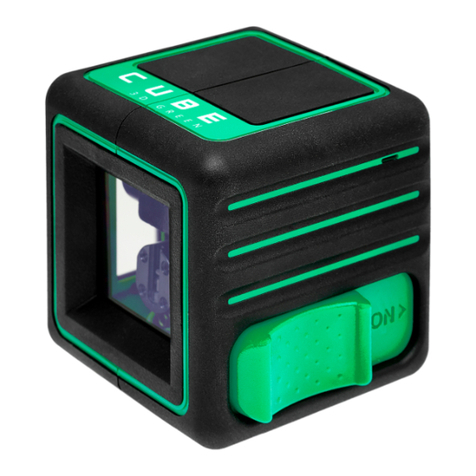
ADA INSTRUMENTS
ADA INSTRUMENTS CUBE 3D operating manual

Orange Research
Orange Research 4100 Series instructions
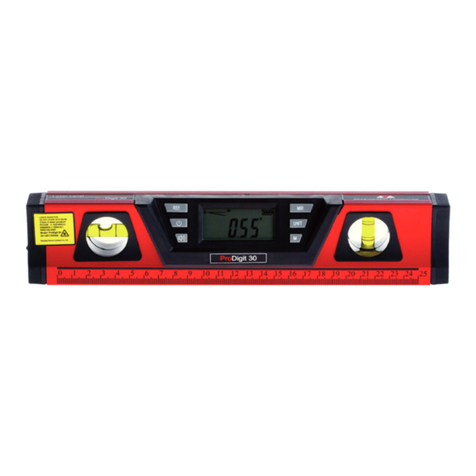
ADA INSTRUMENTS
ADA INSTRUMENTS ProDigit 30 operating manual
